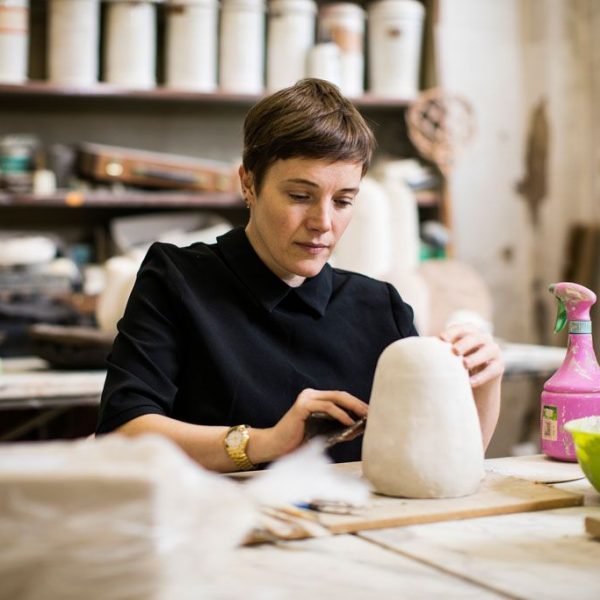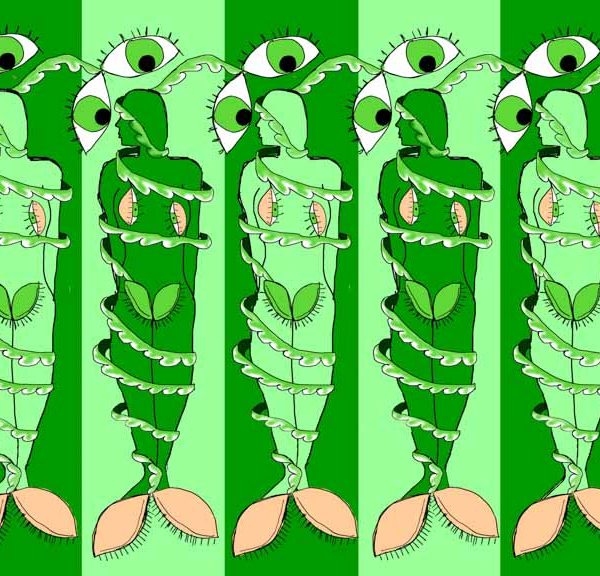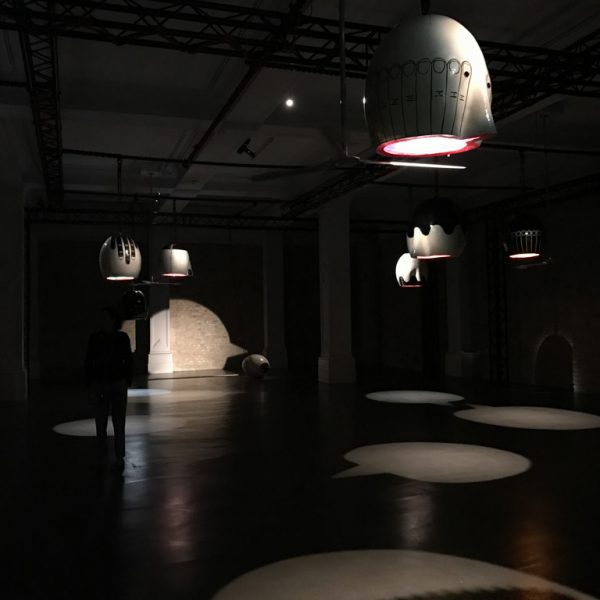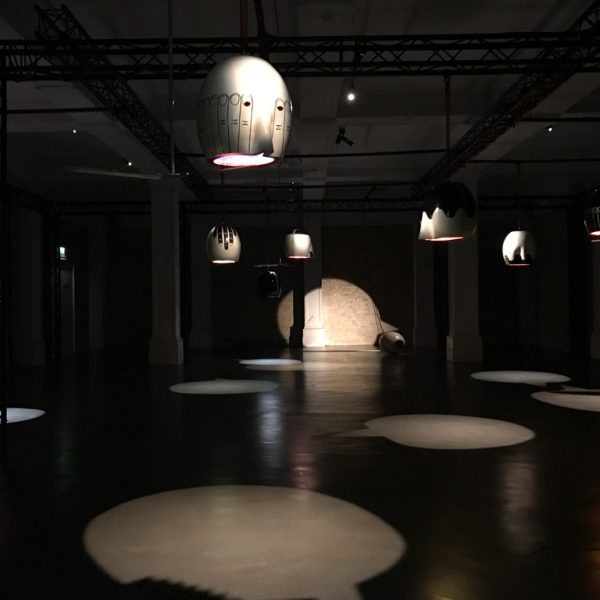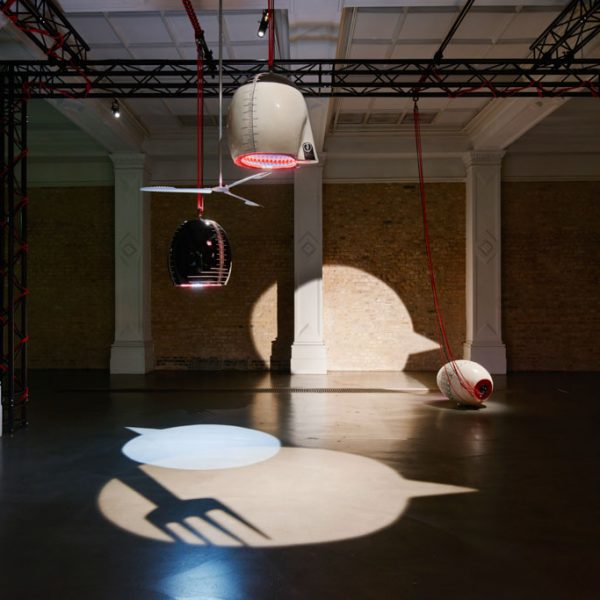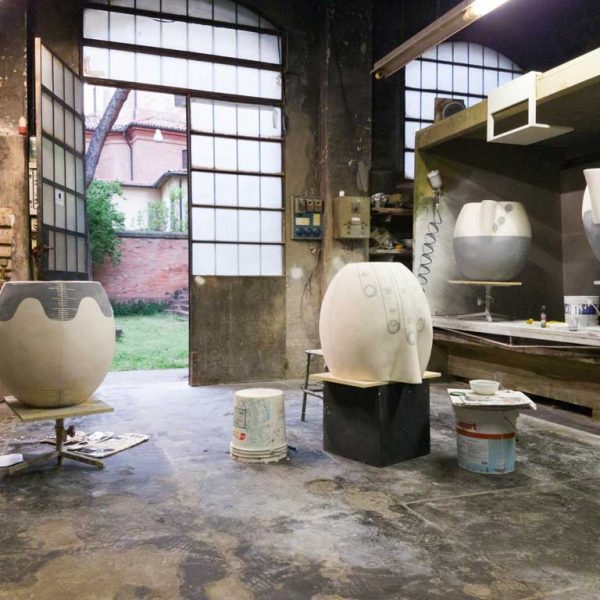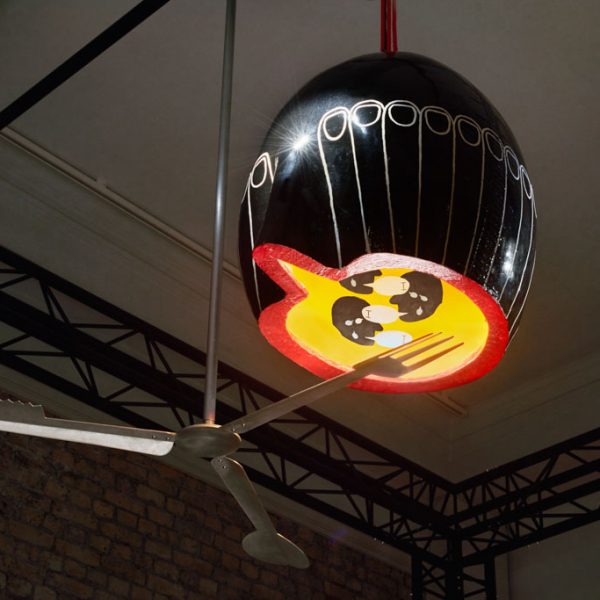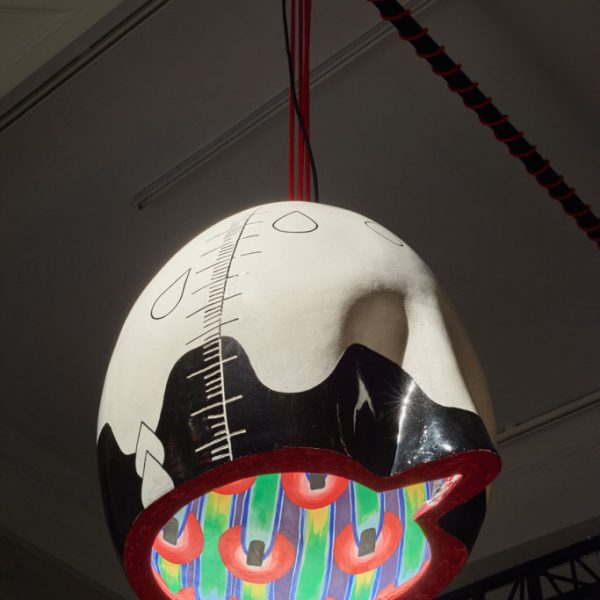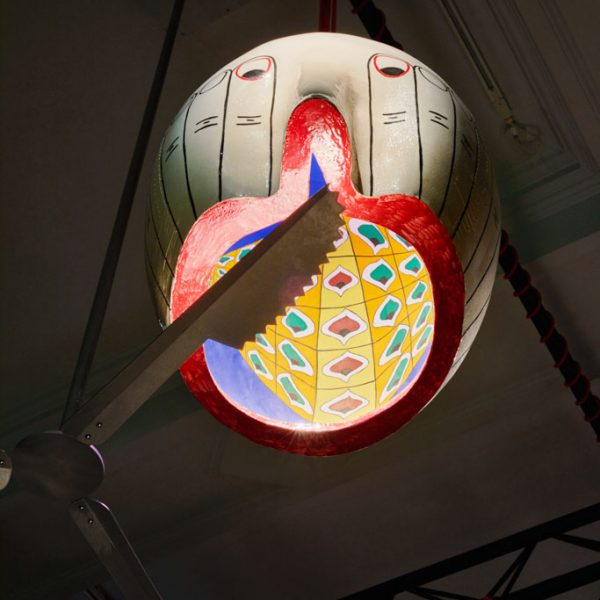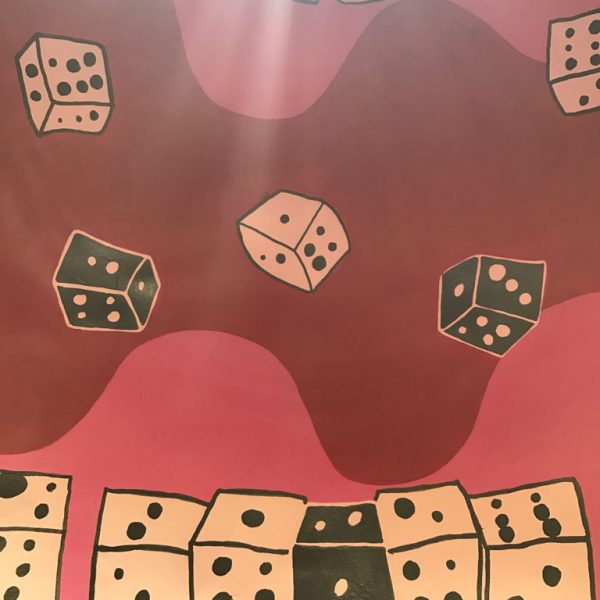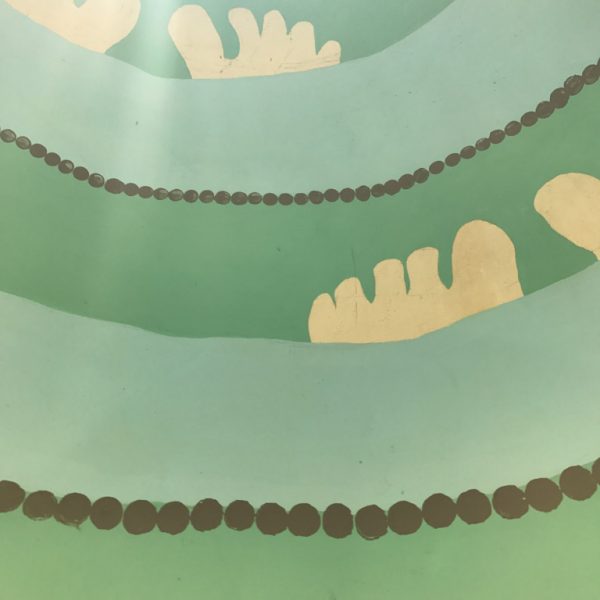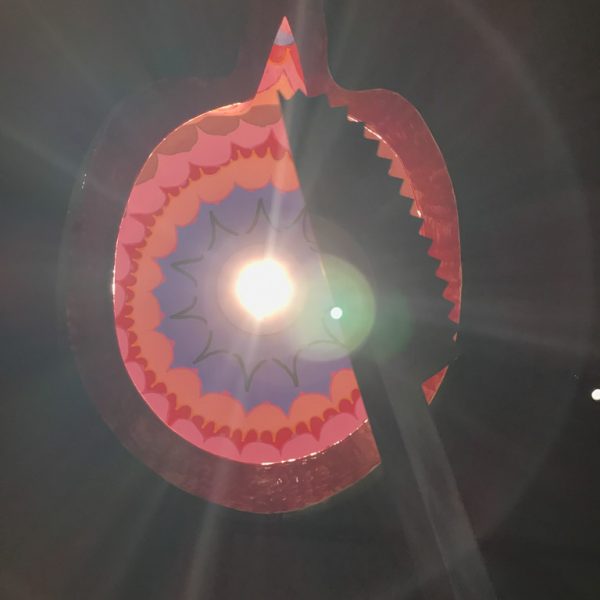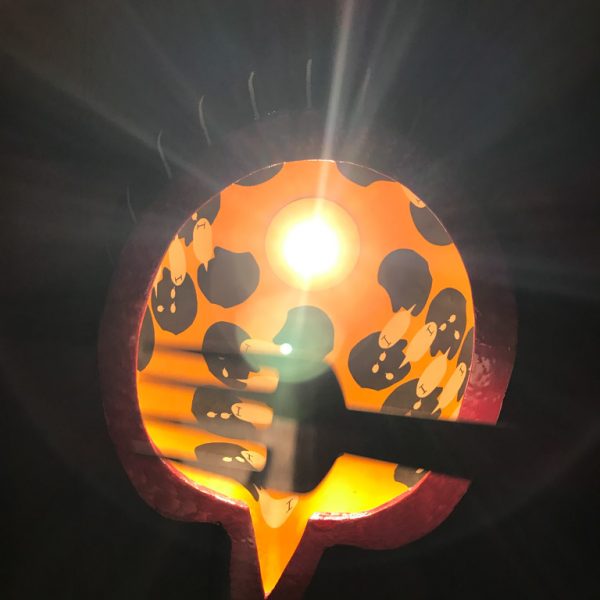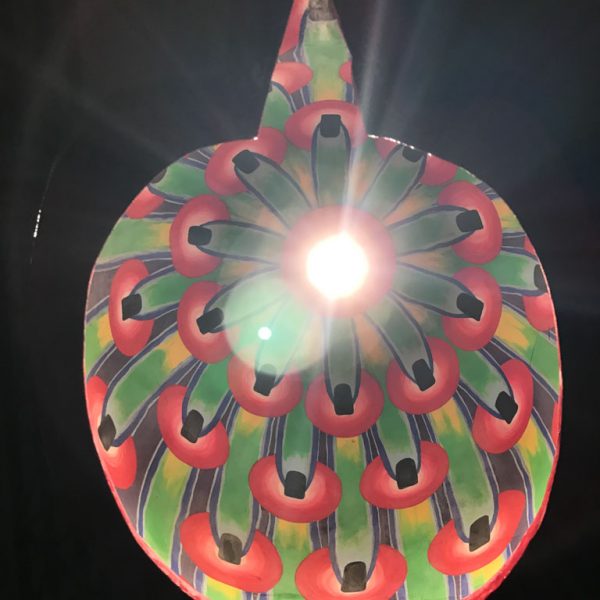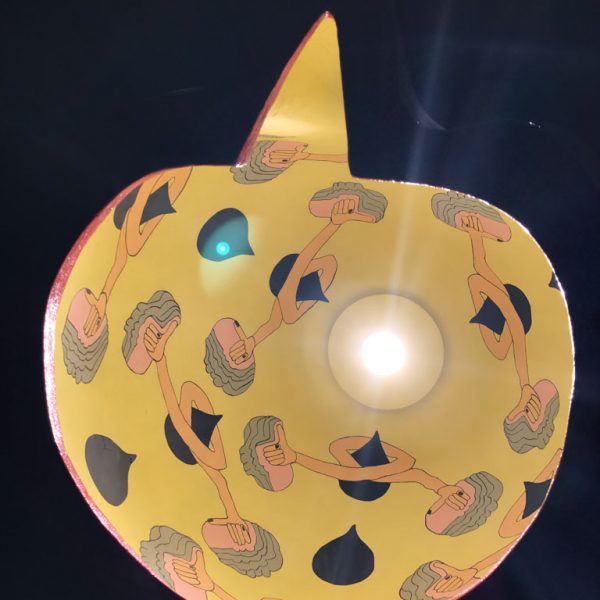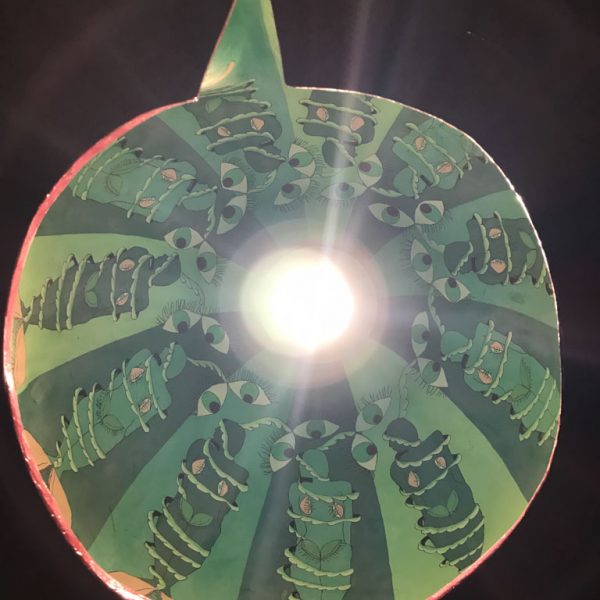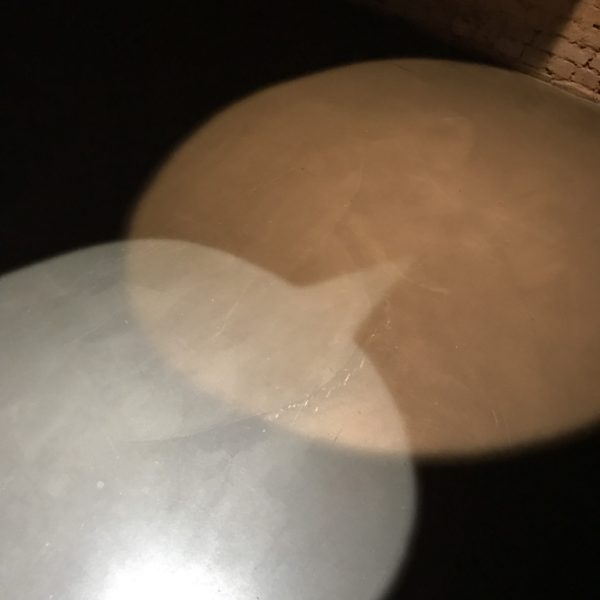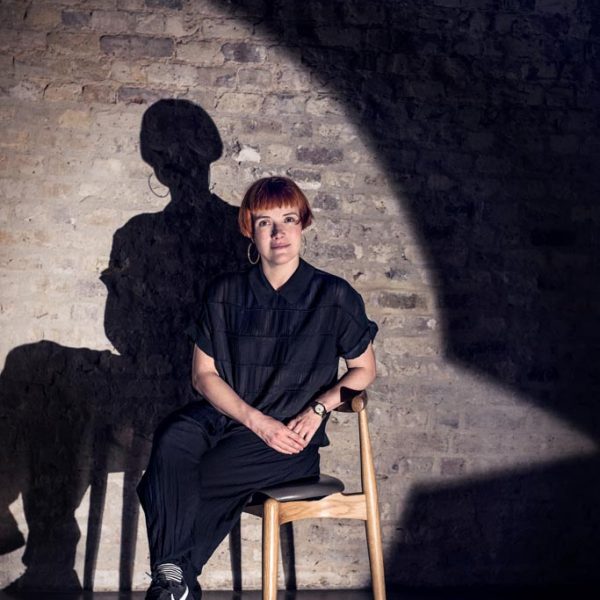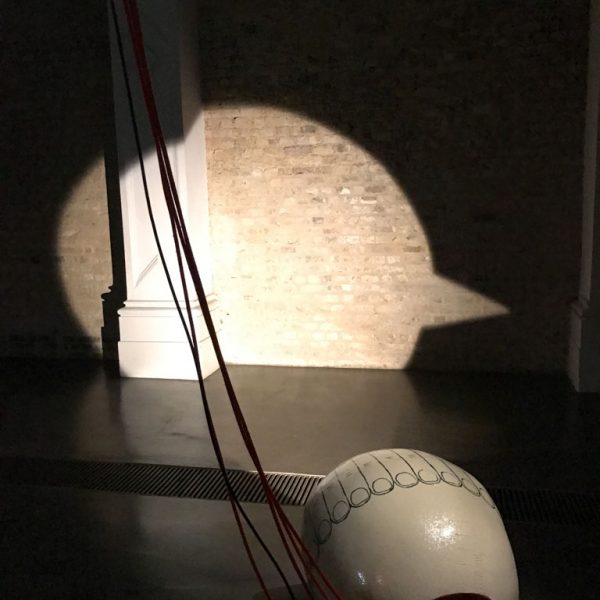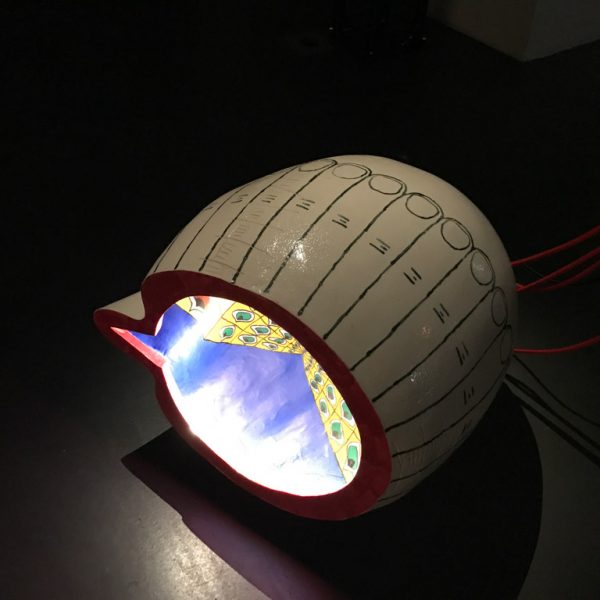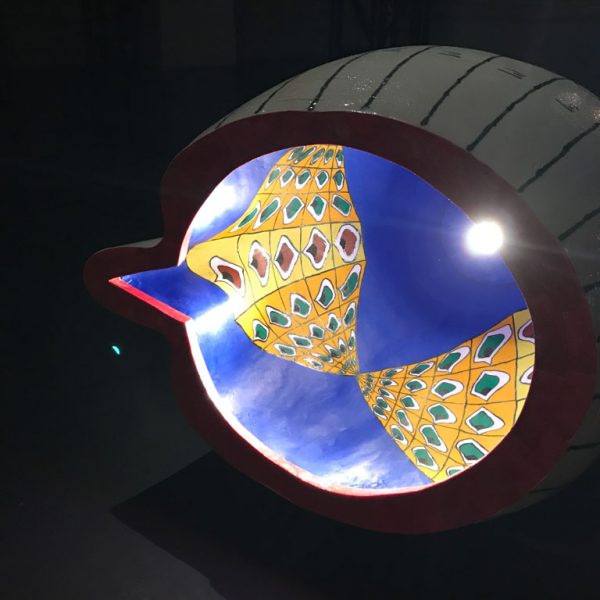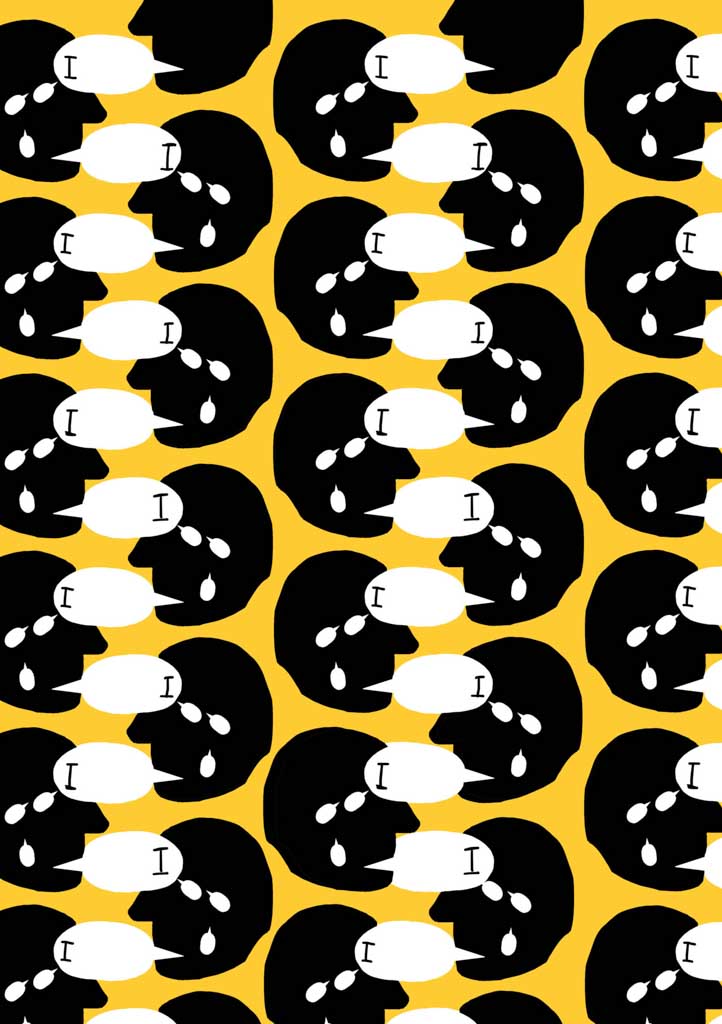
Emma Hart, who won the sixth edition of the Max Mara Art Prize for Women, brings her large-scale installation Mamma Mia! into the Whitechapel Gallery. After a six-month bespoke residency in Italy, Hart presents a family of large ceramic, jug-like luminous heads, which are cut off below the nose but reveal a mouth that projects a speech bubble. The interior space of the heads is filled with vivid patterns, designed and hand-painted by Hart after researching the designs and practice of the Italian tradition of maiolica.
The exhibition cover image does not reveal many details of the artwork, indicating that large flat paintings or tapestries with bright colours and bewildering patterns are to be expected, which makes the entrance to the whole installation quite surprising. At the moment of entering the gallery, you are engulfed by a dim space with a dozen scattered ceiling lamps. The work strangely delivers a sense of tranquillity and solitude, perhaps due to the light and darkness, the pools of light in the shape of speech bubbles–some overlapped like they’re talking in silence, while some solitary as if talking to themselves. Suspended electric fans, in the shape of knives, forks and spoons, constantly interfere with the pools of light. Hart mentioned an interesting metaphor for the rotating ceiling fans under the heads which cut through the light projected by the lamps/heads, comparing it to an execution.
Upon moving closer, you find out that these lampshades are in fact clay heads with painted eyes, hair or fingers. Only when stood under the lampshade can you find the brightly painted patterns inside, lit with a glaring lightbulb, which helps, or in some way, disturbs the viewing of the whole picture. The heat of the bulb was said to be Hart’s memory of Italy. Inside each lampshade or head, there are various themes of patterns and motifs, e.g. one with dice arranged as circles, one with pointing fingers arranged as flowers, one with tied-up bodies and strange eyes flying around, one with crossing arms with thumbs up and down…All of these represent “a particular state of mind such as paranoia”, according to Hart. It is easy to enjoy being immersed in these wild imaginations and such a repetitious and rhythmic orderliness.
Wandering around the dark space full of the silence and solitude leads to a self-association with these heads. We are not dissimilar to the heads. Under the cover of cold clay faces, our minds are also full of wildness, craziness, struggles, fights, love, hate… Only when you ‘cut our heads’, ‘slip inside our brains’, ‘walks into our minds’ or ‘converses with our inner selves’ can the beauty of thoughts be seen. Still, the solitude it transcends is mostly due to the viewing experience, as a voyeur peeping into others’ minds. We came, we glanced, we left. Just like in the real world, having a glimpse of a different world, of the others, yet still alone. People seldom know the craziest ideas inside our heads. We are all these lampshades, hanging there to socialise with others, waiting for someone to walk inside and see the beauty of our mind.
At the end of the gallery, a head lies on the floor. The speech bubble pool of light was projected on the wall, what does it say? Have a look inside the head. As Hart said, she felt that her work should offer a physical not an intellectual experience.
More about the exhibition:
12 July – 3 September 2017
https://www.youtube.com/watch?v=AJTOiPq_6c4&feature=youtu.be

